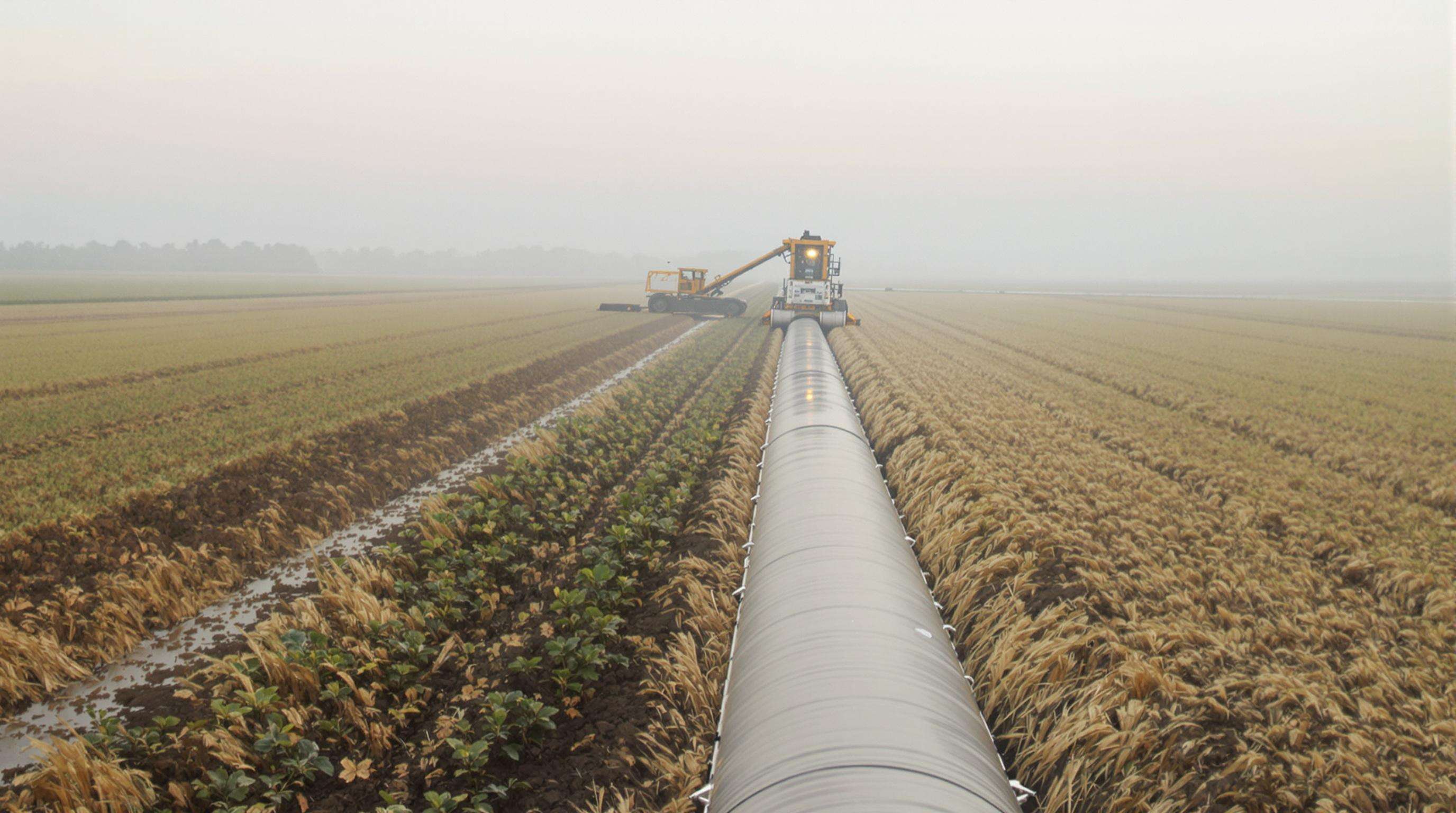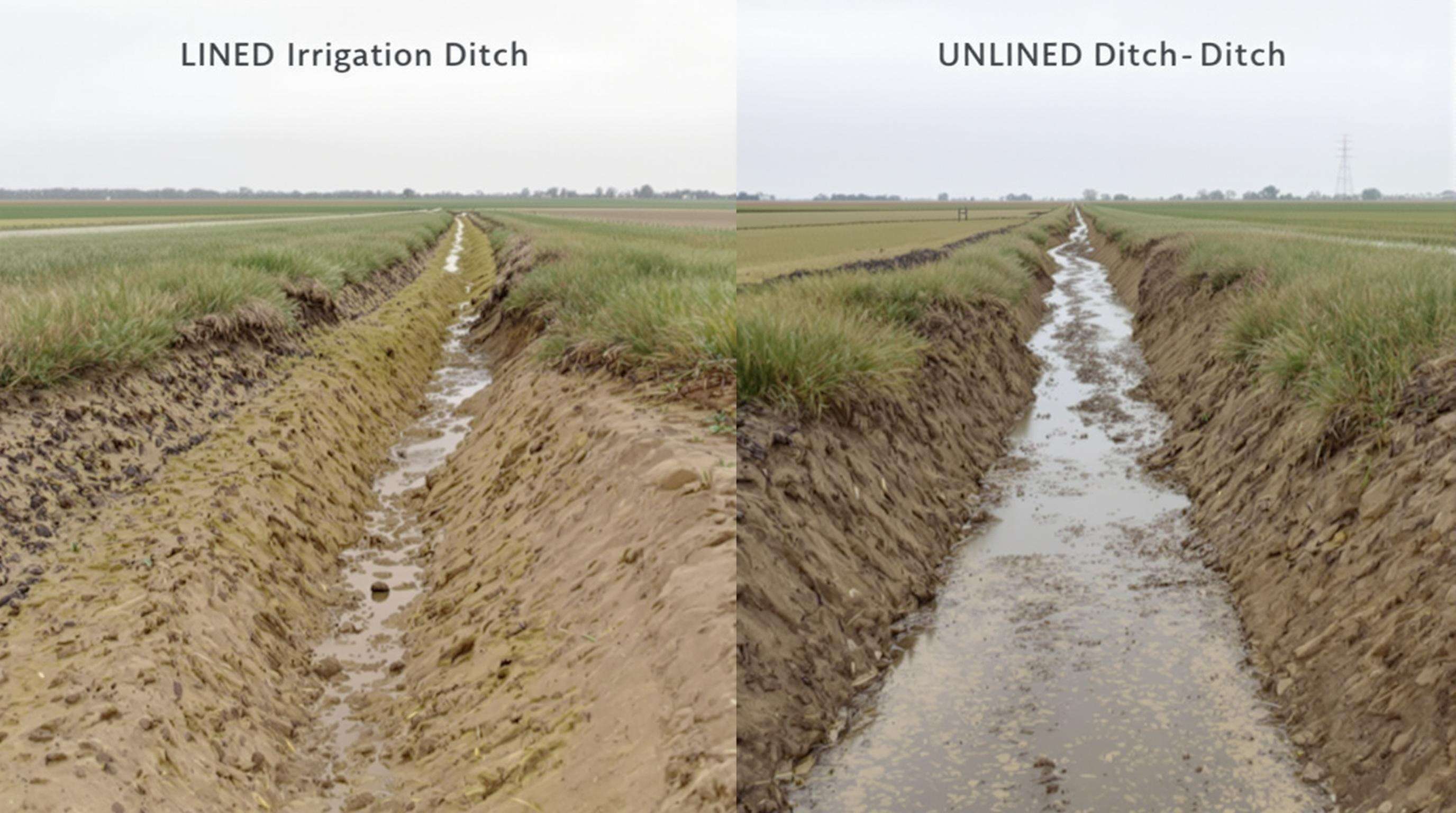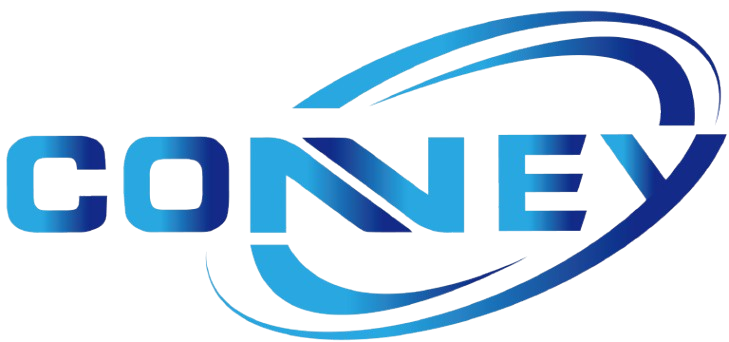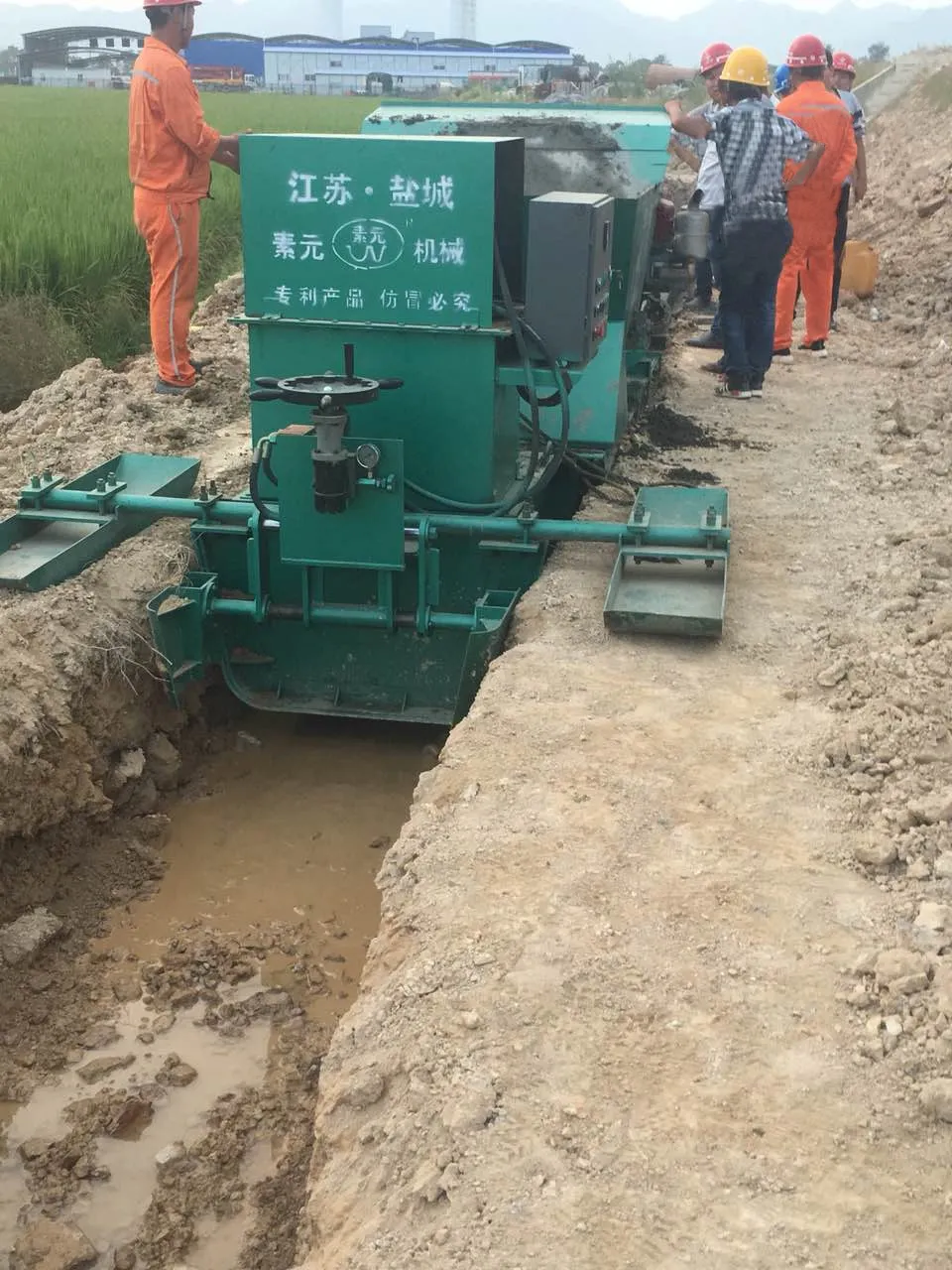ماشین نیسەکردنی چالاکەوە بەرەوپێچەوانە کۆکردنەوەی ئاوی بەهێز

چاندی نوێ زیاتر لە ماشینەکانی لاینکردنی چالاکان دەبەزێت بۆ چارەسەرکردنی هەڵوەشاندنی کاتی کۆکردنەوەی ئاو. ئەم ماشینانەی تایبەت دەربەستی دهروونی بە کەناڵەکانی کۆکردنەوە دەکەن کە دیوارێکی توندوتۆڕی دەبەزێنن کە کۆکردنەوەی ئاوی بەهێز دەکاتەوە. لەڕێی کەمکردنەوەی هەڵوەشاندنی ئاو لە کۆمەڵچوون و بەرەکەییەوە، چالاکانی لاینکراو دابەشکردنی ئاوی بەهێزتریان دەخاتە سەر زەویە کشاورزییەکان
لێکۆڵینەوەی دووبارەیی: چالاکانی لاینکراو لەدژی چالاکانی کۆکردنەوەی نەلاینکراو
لە ساڵی ٢٠٢٣ دەربارەی کارایی چۆکاندن، تا ٣٠-٥٠% کەمبوونی ئاو لە ڕێگەی چۆکاندن و بەرەکەوتن لە ڕووی چەما بە بەرەکەوتن لە ڕێگەی چەماوەکانی خاکی بێ ڕووکەشە دەرکەوێت. دەربەندەکانی ڕووکەشەکراو لە ژێر دەستی ژئۆمەمبران یان شۆرەکان دەتوانن ئەم دەرکەوتانەی کەمتر لە ٥% کەم بکەنەوە و زیاتر لە ٩٥% ئاوی داهاتوو بۆ زەویەکانی گەشت بەرهەم بێنن. لە ناوچە سەختەکان کە ئاویان کەمە، ئەم کاراییە زیادکراوە بەهایەکی تایبەتی هەیە چونکە داهاتنی ئاو بە شێوەیەکی زۆر دەبەستێتەوە.
تەواوی ساختەی دەربەندەکانی ڕووکەشەکراو دەخەریلە دەربەندەکانی بێ ڕووکەشە کە زۆرترین کەمبووی ئاویان هەیە. لە کاتێکدا ڕووبارەکانی ڕووکەشەکراو هەمیشە تێچوونی ئاویان هەمەن دەبەقێنن، دەربەندەکان دەتوانن توربیدیتی (دەرەوەیی) کەم بکەنەوە و کوالیتی ئاوی دواوە بپارێزن- ئەمە یەکێکە لە گرنگترین بەهایەکان بۆ بەرگەکان کە دەیەوێت بە ئامادەکاریەکانی زیستە/environmental regulations.
میکانیزمەکانی کەمکردنەوەی چۆکاندن لە سیستەمە کشتوکاڵییەکان
لاینەرەکانی دیتچ چەندین شێوەیەکی بەکار دێنن لە بەرەنگاری دەرچوونی ئاو. ماتەریاڵە کۆمپۆزیتییەکان وەکوو ژئۆمەمبڕانەکانی پۆلی ئێتیلینی چڕی بەرز (HDPE) دیوارە هیدرۆلیکییەکان دروست دەکەن کە ناگونجی هەیە بۆ هەر دوو توندوتیژی ئاو و چوونەژوورەوەی ڕیشەکان. هەروەها، ڕووکانی ناوەوەی ڕووستەکان ڕووبەری سەرگیراوی کەمتر دەکەنەوە، ئەمەش دەبێتە هۆی ١٥-٢٠٪ زیاتر زووتر بوونی ڕاودان بەهەڵدەنەوەی کانالە زەوییە توندوتیژەکان بەپێی پرینسیپەکانی مۆهەندسی هیدرۆلیک.
تەکنیکە پیشەگەرەکانی دابەشکردن گارانتی دەدەن کە هەموو پێوەکان بە تەواوی دابەزێندرێنەوە و زەوی بنکەیی بە تەواوی لەمەبەر دەستەوەژوورەوە، ئەمەش هەڵدەگرێتەوە لە دەرچوونی ئاو لە رێگەی لایەنی. سیستەمەکانی لاینەری نوێ هەروەها ڕوو لە زیادبوونی گیاکان دەکەنەوە لە دووروبەری دیتچەکان، ئەمەش دەبێتە هۆی لەناوبردنی گیاکان کە بەکارهێنەری ئاو دەکەنەوە و زیادکردنی ڕووبەری بەڕەوەچوون.
ماشینەکانی لاینەری دیتچ ڕوو لە کەمبووی سیستەمی دەرچوون دەکەنەوە
بەرگەستەنکردنی خاک لەڕێی ماتەریاڵە کۆمپۆزیتییەکان
نوێکارییەکانی دەرچوونی دیتچ ماددەکانی کۆمپۆزیتی بەکاردێنن، لە جملەدا بەرگەکانی گیۆتێکستایل و ڕووکانی کە پۆلینەییان کراوە بە ئەسفالت، بۆ دروستکردنی دیوارەکانی داڕێژاندن. ئەم سیستەمەکانی لاکان دەرەکانی خاکی لە قەبارەی سەرەوە دەگرێن و دابەشکردنی ئاوی کۆنتڕۆڵکراو دەستەن، و هێزی ڕووباری ڕووی ئاو دەکەوێتە ٤٠ـ٧٠٪ لە بانکی دیتچی سەرەتی. ماددە کۆمپۆزیتی گیۆسنکتیفی زۆر هێزدار خاکی زەوی خوارەوە دەگرێت کە بە تایبەتی لە خاکی شێر و یانەیی کە ڕوو دەکەنەوە بە توندی یارمەتی دەدات. بەکارهێنانی لێواری و هەروەها ئەندازەی هیدرولیکی کۆمپۆزیت لەم لاینەرە دیتچەکان دیارکراوە کە دەتوانن ئەو شێوەیەی دیتچەکە هەبێت لە کاتی ڕووباری زۆر زیاد بەقورسی بپارێزن کە دەبێتە هۆی کەمبوونەوەی چالاکی خاکی تا ٨٥٪ لە خاکەکانی سێل داڕێژاو (بەڕێوەبردنی ئاوی کۆمەڵەیی، ٢٠٢٣).
ناونیشانی ژمارە ٢: کۆنتڕۆڵی داڕێژاندن لە زەویەکانی شێوەی داڕێژ
لە یەکێک لە زەویەکانی مەیزی میانڕوویەکان بە شێوەیەکی سەروو ١٥% دا، کەمبوونی خاک تا نزیکەی ٩٠% کەم کراوەتەوە لەڕێگەی بەکارهێنانی لاینەرەکانی پۆلیمەری سەرووڕەوکراو، کە بە ماشینی خودکاری لاینکردنی قوریگەلەکان دا ناسێندرابوون. ماشینەکە سیستەمی ژیۆگرید بەکارهێنا بۆ دروستکردنی ١,٢٠٠ پەوت لە چەنەلێکی ستابیل، بە بەکارهێنانی سنگەکانی وێر، بۆ کەمکردنەوەی خێرایی ئاو لە ٣.٢ cfs تا ٠.٨ cfs لە کاتی بەرزترین ئاوپاشی. کۆنەکانی زەویەکە هیچ شکاندنێکیان نەبووە و ٦٥% کەمتر تیامکردنەوەیان هەبووە بەهەستانی سیستەمەکانی پێشووی بێبەرگە لە ماوەی سێ ساڵی ڕووکەڵەوە.
ماشینەکانی لاینکردنی قوریگەکان هەڵوەشاندنی هەڵوەشاندنی درێژخایەن کەم دەکەنەوە

دابەشکردنی ١٠ ساڵە: سنتەتیکی بەرلەوە بەرامبەر بە دیتچەکانی لاینکراو
د دې صنعت څخه د لاسلیک شوې اطلاعات ښيي چې د لیک شوي سرو سینو د میرات کولو لګښتونه د ۱۰ کلنې مهاله په څیرمه کې د نا لیک شوي سرو سینو څخه ۴۰-۶۰٪ نیټې دي. د کلاسیک خاکي سرو سینو لپاره د هر کال د ۱۵-۲۵ ډالر په مقدار کې د خطي فوټ لپاره د میرات کولو لګښتونه اړین دي، خو د مرکب لیک شوي سرو سینو د لګښتونه د تخریب کنترول، د سیډیمینټ کنترول په ګډون، د ۵-۸ ډالر ته کموي. د لیک کولو تجهیزاتو لومړنی لګښت به د ۶-۸ کلنې مهاله کې د ویجیټیشن مینیجمنټ مخنیوي لګښتونو او د ډريج کارمندانو د کمښت له امله خپل ځان ډک کړي.
د ۱۰ کلنې مهاله کې د لګښتونو اصلي محرکونه عبارت دي له:
- د سیبیج مرمتونه : د نا لیک شوي سرو سینو د اوبو د جریان ۲۵-۳۰٪ لګوي، چې د هر کال د هکتار په ۱،۲۰۰-۱،۸۰۰ ډالر کې د نوښت لپاره اړتیا لري (د سیمه ییزو کشاورزي ډیټا سیټونو له مخې)
- د سیډیمینټ د لیرې کول : د لیک شوي سیسټمونو د ډريج کولو د متواتریت ۷۰٪ کموي، چې د هر میل لپاره د هر کال ۴۵۰-۶۰۰ ډالر بچوتلی کوي
- د شیبې د ثبات ونیول : د مرکب لاینرونه د خطي فوټ په ۱۸-۲۲ ډالرو کې د تخریب سره تړلې د خرابیدو د بچوتلو سبب ګرځيږي
د جیوسینټیک لاینرونو کارولو پروژکتونه راپور ورکوي 90%+ توانایی فونکسیونی دوای 10 ساڵ، لە 45-55% بۆ ناوەڕۆکەکانی بێ بەرگە دەرەوە. ئەم داهاتانە دەستێنی فێرمان و شارەوانییەکان دەکات بۆ هەڵکردنی دووبارەی کارەکان بۆ گەشەپێدانی سیستەم یان نوێکردنەوەی سیستەمی سەرچاوەی ڕووبار.
ماشینەکانی لاینکردنی چالاکان بەرگری لە بەرەنگاربوونی داڕێژەیی دەبەزێنن
کارایی هیدرولیکی لە کاتی هەواڵە سەختەکان
ماشینەکانی لاینکردنی چالاکان بەرگەیەکی ناڕوویی دەکەن کە ڕێژەی ڕووباری ئاو لە کاتی شەویەکانی زۆر باران دەگەیەنێت بۆ ئەوەی خەمگەری داڕێژەیی 35-52% کەمتر لە سیستەمە بەرگەنەکان بێت (لە گەڵ 2022 Flood Management Study). لاینە کۆمپۆزیتەکان لە جۆری HDPE یان کۆنسۆلی بەرگەیی دەتوانن دەستەواژەی هیدرولیکی تا 8.5 psi. دەگات و هەرگیز ناپووشێت کاتێک ئاو زۆرتر لە ڕووباری دەرچوونی داودەبێت. ئەمەش دەرچوونی ئاوی لە چالێکی سەرەتا یەک مەتری بەرگەنەکە دەکات کە لە ساڵێک بۆ ساڵێک 20-40% کەمتر دەبێت.
لە ناو ماددە یەکسانەکانی نوێ، ڕووکارەکانیان بە قەدەرێکی کۆمەڵێک خۆشەویستن کە هەڵگیراوی دەبەزێنن و ئەمەش دەبێتە هۆی ٤٠-٦٠٪ زیادکردنی کۆمەڵە دەرچوون لە کاتی بارانی توندەکان. ئەم زیادبوونە بەرگری لە زەرەرەکانی زەوی و ئەو بەرهەمە سەر زەویەوە بە تایبەتی دەریادانی ڕێگاکان بە کەمکردنەوەی ٧٨٪ و کەمکردنەوەی دەریادانی گیاوازەکانی ٦٣٪ لە ناو بارانە چاوڕوانەکان. لە کاتێکدا کانالەکانی خاک ١٥ تا ٣٠٪ لە تواناییان لە ماوەی سێ ساڵ دەست دەکەوێت، کانالەکانی لاینکردنی مەکانیکی ٩٥٪ لە کۆمەڵەی خاکیان دەگەیەنێت بۆ زیاتر لە یەک دەیە.
ماشینەکانی لاینکردنی کانال بە بهرگریکردنی چاودێری ئاو دەگەڕێتەوە
ماشینەکانی لاینکردنی چالاکان (DLM) بەرهەنی دیاریکراوی بۆ کۆنتڕۆڵی ئاوی کشاورزی دەبەزێنن. ئەمەش دەبێتە هۆی کەمترین دەربازبوونی ئاو لە کارەبایەکانی چالاکانی لانەدراو تا ٤٠ـ٦٠٪ کەمتر و هەروەها دەبێتە هۆی دروستکردنی تۆڕەکانی دەرچوونی ئاو بەپێی سۆزۆری نوێنەکان لە بواری پارێزگاری. ئەم تەکنۆلۆژیایە دەبێتە هۆی کەمکردنەوەی ئەو هەڵوەشانە لە ڕێگەی دانانی خاکەکان و فراهمکردنی گرانتی بۆ گەمارۆی لە چەچنەوە لە ڕێگەی زیادبوونی یاساها و داواکاریە زیستیەکان.
ڕووبەرگرتن لە بەرەکەی کیمیاوی لە ناوچە کشاورزییەکان
لە گەمارۆی ساڵی ٢٠٢٣ دا، لاینەرە گیۆسینتیکییەکان ٩٨٪ لە کود، کیمیا و ماینەکان دەخەنەوە لە چوونە ناو چەشمان و سەرچاوە ئاوەکان. ئەم بەرگریە بە تایبەت دەبێتە هۆی گرێبەست لەو ناوچانەی کە ڕێژەی نایترات زۆرتر لە چەمکی ئاسایشی EPA کە ١٠ ملگرام NO3 -N / لیترە. کشاورزانەکانیش ڕاپۆرتی دەربارەی ٧٢٪ کەمتر بوونەوەی ناگۆڤاری ئاو لە ڕێگەی کارەبایەکانی کیمیاکان دەدەن لە کاتێکدا کۆنتڕۆڵی ئاو و کود بە شێوەیەکی ڕەشەفانە دەکەنەوە.
ڕێگەیەکی دەسەڵاتی EPA بە داڕێژەی دەرکردنی کۆنتڕۆڵکراو
سیستەمە ڕێکخراوەکانی لاینکردن دەبەنە بەشێک لە تێچوونی ڕێگەی دابەزین کە پێداویستیەکانی دەستووری دەرکردنی EPA (ELGs) بۆ شۆرەی کشتوکاڵی فراوان دەگەڕێنێتەوە. دەروازەکانی گۆڕانی و دەرکردنی پێچەوانەیی دەتوانن بەرهەم بەرەو بهرههێنەرەكان بۆ ئەنجامدانی ئەم کارانە:
- هەڵگرتنی ئاوی تەواوی ئاوی خووڕان لە کاتی قورسایی ئاو
- دەرکردنی شۆرەی هەوا لە ڕێژەی خاکی داواکراوی EPA
- بەڵگەدارکردنی نەخۆشی دەرکردن بۆ NPDES داواکاری
لە تاقیکردنەوەی زانکۆی دەوڵەتی ئایۆوا لە ساڵی 2022 دەرکەوت کە شوێنەکانی دەرکردنی لاینکراو 89% ڕێگەی دەسەڵاتی دەستووری ئاوی پاک کردەوە لە 34% شوێنەکانی زەوی سەرەکی.
ماشینەکانی لاینکردنی چالاکان پشتگیری لە هەوڵەکانی پرۆژەی جیاواز دەکەن
The nifşên dawî yên makîneyên lining trench sazkirin niha çareseriyên cuda ji bo sepanên çandiniyê û endezyariya sivîl pêşkêş dikin, makîne dikare ji bo erdê cuda û şertên projeyê taybetî sazkirin. Ev sîstemên çandiniyê yên rastîn in ku rêveberiya avê di zeviyên çandiniyê yên dewlemend ên xwarinê de heta herêmên bajarên bi dijwarî bilind zêde dikin, rastbûna ji % 80 ji cureyên axê pêk tînin (USDA, 2023). Gûhertina wan ji bo karsazên ku divê li gorî rêziknameyên hawîrdorê tevbigerin û di heman demê de asta hilberîna bilind biparêzin, hêzeke mezin e.
ڕێچکەکانی گۆڕانکاری بۆ جۆرە زەویەکان
خاکەکانی گەڵێ، شۆن و خاکی لۆم پێویستی بە لاینەرە خاسەکان هەیە بۆ پاراستن لەدژی تۆپەڵکردن و دەرچوونی دیوارەکان. دیافراگمەکانی PVC ی فلکسیبل کار دەکەن لەگەڵ زەویەکانی کە تغییر دەکەن لە ناوچەکانی زەریاری، و مخلووطەکانی LLDPE ی بەرهەنەکراو دژی دەرکردنی لە ناوچەکانی گەڵێ یان شۆنەکانی سەرشار دەست دەکەن. جدولەکانی شوێنگرتنی کە پێچەوانەی pH ی خاک و فشاری هیدرۆلیک دەکەن ئێستا لە بەشێکی زۆری بەرهەم بەرەوە و کۆمپانیاکانی سەرەکی دا مەسرەفە.
| Materyal | جۆری خاکی ئیدەال | فایدە سەرەکی | زۆرترین چارەسازی |
|---|---|---|---|
| پۆلیمەر-گۆڕان دەبێت | گەڵێ (گەشەی زۆر) | فلکسیبلیتی (دەرکەوتنی ٢٠٠٪) | ناوەندی |
| PVC | شۆن (چالاک) | تەواوی هێڵەکان | روشنایی |
| کۆمپۆزیتی LLDPE | Loam/Gewanekî çînî | Barranî Resistan | Qezenj |
Dîzaynên Moduler ji bo Bêhn û Rewşên Rûrî
Bi pîşesaziya panelê ya pêşîn ku veguheztina lezgîn di projeyên deryafî yên şerîf de û lêdana nava derûnî yên rûrî yên bi dirêjahiyek berdewam a zêdetirî 1,000 ft-ê peyda dike. Yekbûna navendî ya guherbar dîtina avêtin û berfirehiya şûpê di qadê de guherîne, bi vî awayî 35% kêmkirina xercên xebatên taybetî yên pîşesazî dikare were dîtin (Îrrîgayşîn Îsokyasyon 2023). Di projeyên arîkên bi şewaz de, qismên moduler bi gelemperî bi kêmî û pereyên kontrolkirina deryafê re têne bikaranîn da ku parastina çînî peyda bike.
پرسیارەکان و جووڵەکان پێکهاتوو
Makîneyên lînkirina şûpê çi ne?
Makîneyên lînkirina şûpê amûrên taybetî ne ku di çandinî de têne bikaranîn da ku lînkerên dirêjwere yên di kanalên avdanî de bixin, parêzekên bêyî avdanî çêkin û avdanî û windabûna avê bi berdanê û şilbûnê pêşî bigirin.
Di termên karanîna avê de şûpên ku lînkirin çawa bi şûpên ku lînnekirin re têne berhev kirin?
دەروچەکانی لاینکراو دەتوانن داڕەچەکردنی ئاو بە تێچووێکی کەمتر لە 5% کەم بکەنەوە لە کاتێکدا 30-50% لە دەروچەکانی بێ لایندا، واتە زیاتر لە 95% لە ئاوی داواکراو دەتوانێت بگاتە زەویەکانی مەبەست، بەتایبەت لە ناوچە چاوڵەکاندا.
چی دەمەکان بەکاردێت لە لاینکردنی دەروچەکان؟
دەمەکانی سەرەکی ژمارەیەکی پۆلی ئێتیلینی چڕی بەرز (HDPE) ژئۆمەمبرانەکان، پۆلە ئاوییەکان، و ڕووکەکانی سەر بە کاربیتی ئەسفلت دەگرێتەوە، ئەمەش دیوارە هیدرولیکییەکان دروست دەکەن و بەرگری لە بەرەکەوتنەوە دەکەن.
چی گونجانییەکانی دەروچەکانی لاینکراو بۆ درێژەی کات دەبێت؟
هەنگاوەکانی دەسەڵاتداری 40-60% کەمتر دەبێت لە سەرەتایەکی دەی ساڵەوە لە دەروچەکانی بێ لاینەوە. بە کەمکردنەوەی ڕەشیدن، کۆکردنەوەی گیل، و هەڵگرتنی سەرەوەی شێوەیەکان، سەرماکەی سەرەتی لە لاینکردن دەتوانێت لە نێوان 6-8 ساڵدا بەردەست بێت.
چۆن دەروچەکانی لاینکردن ماسینەکان یارمەتی کۆنتڕۆڵکردنی بەرەنگی دەدەن؟
دیوارە بەبەستەکان دروست دەکەن کە هێزی ڕووکردنی ئاو لە کاتی بارانی زۆر زیاد دەکەن، خەمگورانی بەرەنگی 35-52% لە سیستەمە بێ لاینەکان کەم دەکەنەوە، بەم شێوەیە زیرەکانی داواکراوی داپەڕاندنەکان هەڵدەگرێت.
Naveroka Beşê
- ماشین نیسەکردنی چالاکەوە بەرەوپێچەوانە کۆکردنەوەی ئاوی بەهێز
- ماشینەکانی لاینەری دیتچ ڕوو لە کەمبووی سیستەمی دەرچوون دەکەنەوە
- ماشینەکانی لاینکردنی قوریگەکان هەڵوەشاندنی هەڵوەشاندنی درێژخایەن کەم دەکەنەوە
- ماشینەکانی لاینکردنی چالاکان بەرگری لە بەرەنگاربوونی داڕێژەیی دەبەزێنن
- ماشینەکانی لاینکردنی کانال بە بهرگریکردنی چاودێری ئاو دەگەڕێتەوە
- ماشینەکانی لاینکردنی چالاکان پشتگیری لە هەوڵەکانی پرۆژەی جیاواز دەکەن
- پرسیارەکان و جووڵەکان پێکهاتوو




